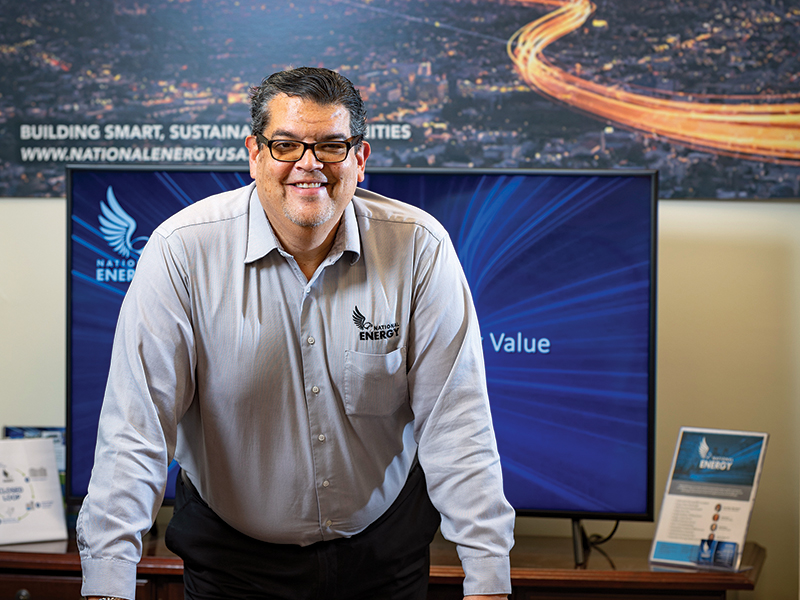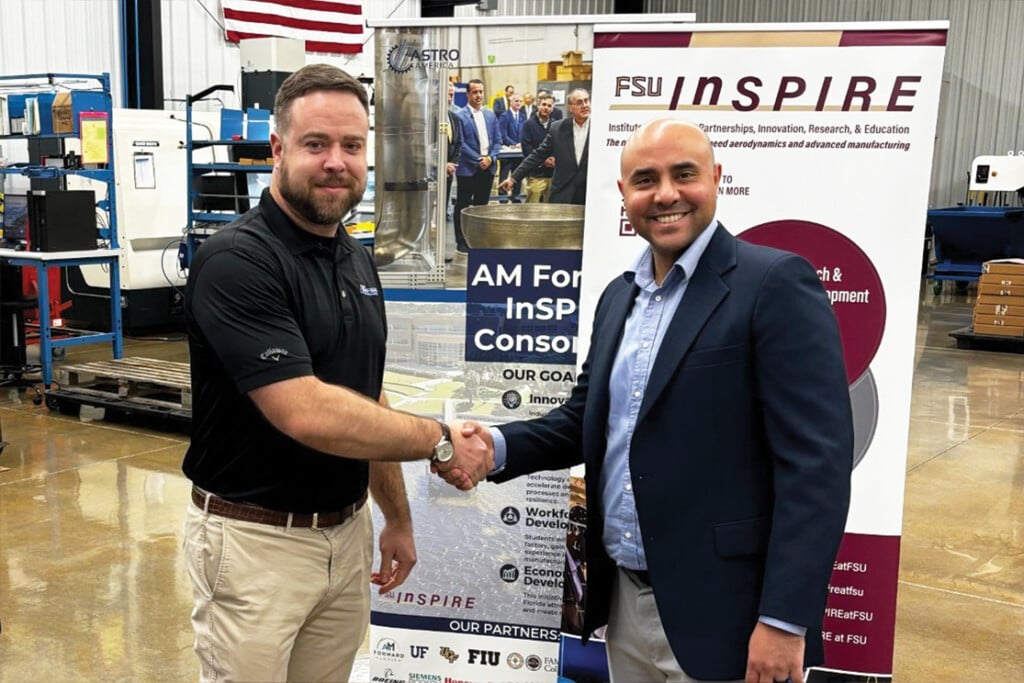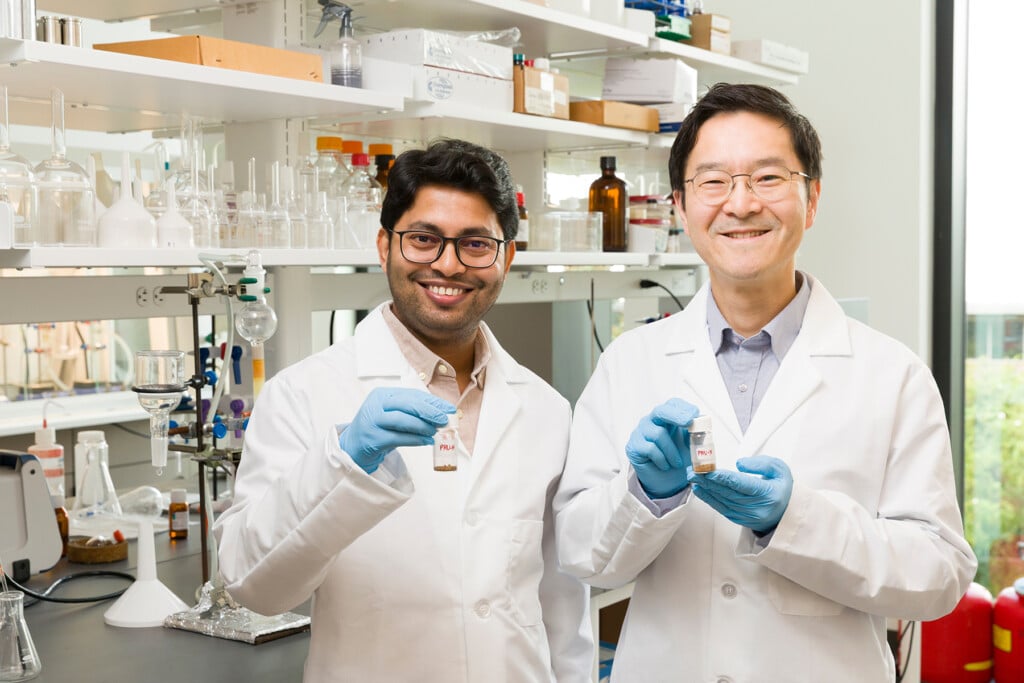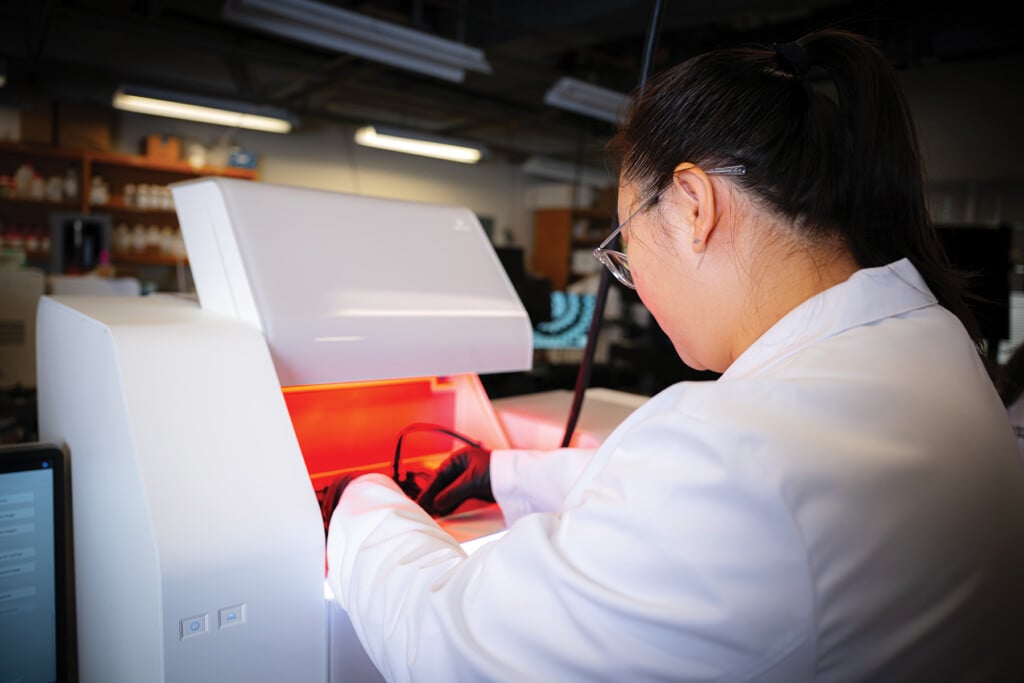Wheels on a Suitcase
Pensacola startup is converting garbage to energy

The U.S. military had a garbage problem.
A coalition led by the United States was prosecuting the Gulf War, largely from forward operating bases in remote locations where there was no sane way to take out the trash.
Under the circumstances, U.S. forces dug big holes in the sand for use as burn pits.
“All the garbage that was generated by these FOBs (forward operating bases) went into the pits, and we poured jet fuel on it — what could possibly go wrong? — and we lighted the garbage on fire,” said Dave Robau, who was then a civilian Air Force employee located at Hurlburt Field. “Everything was getting burned — batteries, foam plastic, you name it.”
Personnel were exposed to noxious fumes. And, the plumes of black smoke that rose from the burn pits let the enemy know precisely where the infidels were located.
“The joint chiefs of staff came to my unit in the Air Force Special Operations Command and said, ‘We’ve got to fix this; we can’t have these burn pits anymore,’” Robau said.
Robau, as it happens, was engaged as the lead scientist on a project working to develop a plasma gasification waste-to-energy system capable of providing a safer, less detectable, way of disposing garbage while also serving as an off-the-grid source of electricity.
The “garbologist,” as the undersecretary of the Air Force would call him, got to work, building the plane, as is said, while flying it.
“The whole gasification plant fits inside of a Starbucks, but we had to place pieces, parts and equipment in shipping containers that could be loaded into a C-5 and flown to wherever they needed to go,” Robau said.
“Getting electricity into a combat zone is hellaciously expensive,” he pointed out. “Marines were providing a lot of support transporting fuel, and that put their lives at risk. Now, we had a solution to handle the garbage problem and also create energy for the AOR (area of responsibility).”
The Pentagon was thrilled.
Today, Robau is the co-founder, chief scientist and CEO at National Energy USA, a startup currently operating from space at the CO:LAB business incubator in Pensacola. In concert with technology partners, the business has active waste-to-fuels projects all over the world.
Robau is confident that, for his enterprise, the time is right. He just might be the garbage man that the world needs right now.
“We are at a crossroads where people are starting to pay attention to what we are doing with our garbage and also paying attention to how we are generating energy,” Robau said.

Dave Robau, the co-founder, chief scientist and CEO at National Energy USA, uses a gasification system to reduce garbage (minus recyclables) into a nontoxic engineered fuel. His work has the potential to dramatically reduce the amount of solid waste reaching landfills. Photo by Mike Fender
That concern was accelerated five years ago when China adopted its National Sword policy that halted its import of plastics and other materials.
“China had been the world’s dumpster, basically,” Robau said. “Everything was going to China. You put a plastic bottle in a recycling bin in Pensacola, and off to China it went. And the Chinese were just burning it for energy.”
With the arrival of an environmental renaissance like the one that occurred in the U.S. in the 1970s, China resolved not to be the world’s dumping ground anymore.
“Businesses were sending what was supposed to be recyclable material to China and instead it was often medical and other types of hazardous waste,” Robau said. “The Chinese government went to the World Trade Organization and said, ‘We’re not taking any more waste.’ Literally overnight, you could see recycling facilities all over the world shut down.”
In the midst of an interview, Robau retrieved from a briefcase a pellet that looked like something an owl might upchuck, and explained National Energy USA’s waste-to-energy processes.
“This was garbage,” Robau said of the pellet, “predominantly food waste, and it might contain yard clippings, office paper, anything that is cellulosic. Now, it is an engineering fuel,” — one that can be used for domestic, peacetime purposes.
According to Robau, about 50% of what’s in a typical household garbage can be converted into an engineered fuel. The other 50%, in the main, can be returned as recyclables to “the circular economy that regenerates the supply chain.”
Robau likes to draw a parallel between his business and whoever it was who put wheels on a suitcase.
“He didn’t invent the suitcase, and he didn’t invent the wheel,” he said. “He just saw that they were two things that could go together. We bring disparate technologies together. We have front-end recycling components to isolate the biomass, and then we take the biomass and we sterilize it because there are all sorts of nasty things in your garbage stream — salmonella, blood-borne pathogens. We cook the garbage in a pressure cooker for about 22 minutes and at the end of that process, you have a combustible fuel that can be burned to generate energy.
“Garbage disposal and energy. We put the wheels on the suitcase.”
National Energy USA is fast discovering that its technology and processes have applications for private-sector businesses, municipalities and the world’s most famous theme park.
It is working with Disney World, which is striving to reduce to zero the amount of waste it delivers to landfills by 2030. It is working with the City of Key West, which has no space for landfills and frequently loses power when storms come out of the Caribbean and enter the Gulf of Mexico.
“Key West trucks its garbage to West Palm Beach,” Robau said. “It may cost them $100 a ton to do so. At National Energy, we might agree to take the garbage from where it is being generated for $90 a ton. We will process it and convert it to energy. To obtain financing, we can take our contract with Key West to our lending partner as evidence of reliable future revenues and borrow the money we need to build our plant.”
An early private-sector National Energy USA customer was Lehigh Cement in Vancouver. Cement-making produces a large carbon footprint and is not easily decarbonized. The heat required to make portland cement and component materials, including cement clinker, is so intense, Robau said, that Lehigh’s coal-fired plants generate nine tons of carbon emissions for every 10 tons of cement that is produced.
Lehigh was curious to try co-firing its operations with a mixture of coal and engineered fuel.
“They got a permit for a research and development project, and we sent them 800 tons of fuel from a demonstration plant in Tennessee,” Robau said. “For two weeks, they did a stack test. By using a blend of 60% coal and 40% of our fuel, greenhouse gas emissions drop by 22%. They were doing high fives.”
And Robau may have been inclined to jump for joy. In his mind, handling garbage and helping to decarbonize big polluting industries were adding up to a huge market opportunity.
Last October, National Energy USA won the $50,000 top prize in a pitch competition sponsored by ITEN WIRED, Florida Power & Light Co., Space Florida and TechFarms Capital.
“I am coming to you from the future,” Robau said in addressing the judges, channeling a certain DeLorean-piloting character from a familiar movie.
Afterward, one of the judges approached Robau.
“I want to have my picture made with you,” she said. “You are going to change the world.”


